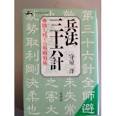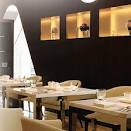With the eyes of people walking in the pedestrian paradise, I took a stroll through Ginza 5-8-chome, where various historical archeological sites are scattered even though slightly quiet.
This time, I will report the location shown in bold letters. Please look forward to the next time. 
<line So far>
Ginza Station: Monument of Sukiyabashi ... Toya Kitamura & Toson Shimazaki Monument ... Takuboku Ishikawa poetry monument ... Pedestrian paradise ... Ruins of the commercial law workshop ... Kinharu Yashiki Ruins of Ginza Brick remain Monument ... Monument of Ginza Yanagi ... Shibakuchi Gomon Ruins of Sanumabori Ruins ... Former Japanese National Railways railroad crossing traffic light ... Former site of Sakujom ...
 Departing from Ginza Station,
Departing from Ginza Station,
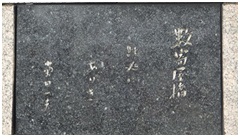
Monument of "Your Name" in Sukiyabashi Park
Sukiyabashi is located in the outer moat of Edo Castle in the early Edo period.
The bridge was built.
It was removed in 1958 due to landfill.
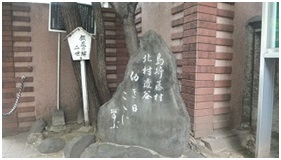
Monument of Toya Kitamura and Toson Shimazaki
It is a school from Toruya and Fujimura.
There is this monument in front of Yasuaki Elementary School
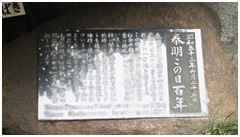
June 25, 1978
The 100th anniversary of Yasuaki Elementary School
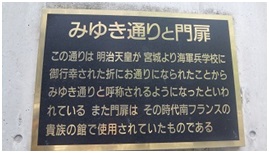
The street in front of Yasuaki Elementary School is Miyuki Street.
It's a nostalgic street for us.
You know the Miyuki tribe~~
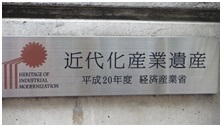
There is such a sign in Ginza.
Yes!
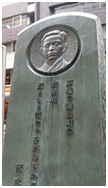
Takuboku Ishikawa Monument
You can see Takuboku doing his best in the Asahi Shimbun.
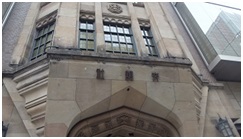
That famous Kojunsha.
By Takenaka Corporation
Even though it became a big building, it left the impression of the old days!
I'm thrilled!
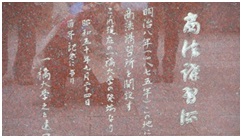
Commercial Code Training Center
Oh, it's in front of Matsuzakaya on the main street!
The predecessor of Hitotsubashi University. Arinori Mori started the course.
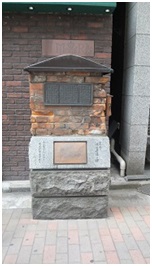
Monument of Ginza Brick remain
Well, this is also left! I'm thrilled!
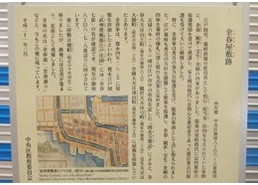
The ruins of Kinharu Yashiki
Noh actor directly under the Shogunate.
These low-income women form a smart Shimbashi geisha. There is a famous Kinharuyu near here.
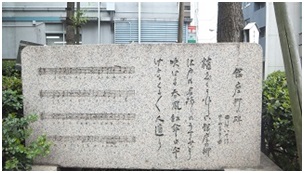
We decided to plant pine, maple and cherry trees for street trees, but not all. Only willows took root.
Monument of the lyrics and music of the song "Ginza's willow"
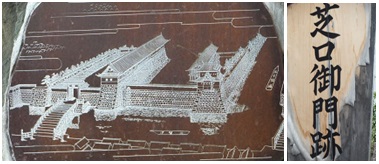 In 1710 (1710), on the occasion of the Korean correspondent Edo Sanfu, the Masugatamon was built in Kitazume, Shimbashi, to show the dignity of Japan. This gate was called Shibakuchi Gomon. At the same time, Shimbashi was also temporarily renamed Shibakuchi Bridge.
In 1710 (1710), on the occasion of the Korean correspondent Edo Sanfu, the Masugatamon was built in Kitazume, Shimbashi, to show the dignity of Japan. This gate was called Shibakuchi Gomon. At the same time, Shimbashi was also temporarily renamed Shibakuchi Bridge.
However, it was burned down in 1724, and since then it has not been rebuilt and the stone walls have been removed. Shibakuchi Bridge returned to the old name of Shimbashi.
A copper plate with the design of the gate at the time. I remember the remnants of the past.
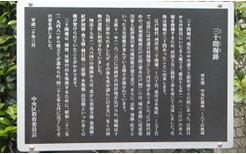
Thirty mine
Opened in 1612 (1612).
The name was given by the width of the moat for thirty.
In 1828 (1828), the width of the moat was reduced to nineteen.
Reclaimed in 1952 (1952).
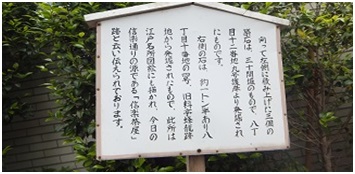
There are three large stones next to the above explanatory version. Explanatory version of the stone group.
These are at the exit of the highway.
It's hard to understand.
The first part is so far.
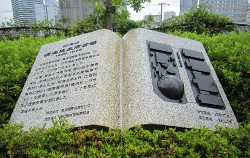 Speaking of Harumi, the elderly like me first associate the international trade fair venue, but there is a monument near the entrance of the Central Incineration Plant (5-2-1 Harumi).
Speaking of Harumi, the elderly like me first associate the international trade fair venue, but there is a monument near the entrance of the Central Incineration Plant (5-2-1 Harumi).










 In 1710 (1710), on the occasion of the Korean correspondent Edo Sanfu, the Masugatamon was built in Kitazume, Shimbashi, to show the dignity of Japan. This gate was called Shibakuchi Gomon. At the same time, Shimbashi was also temporarily renamed Shibakuchi Bridge.
In 1710 (1710), on the occasion of the Korean correspondent Edo Sanfu, the Masugatamon was built in Kitazume, Shimbashi, to show the dignity of Japan. This gate was called Shibakuchi Gomon. At the same time, Shimbashi was also temporarily renamed Shibakuchi Bridge.


